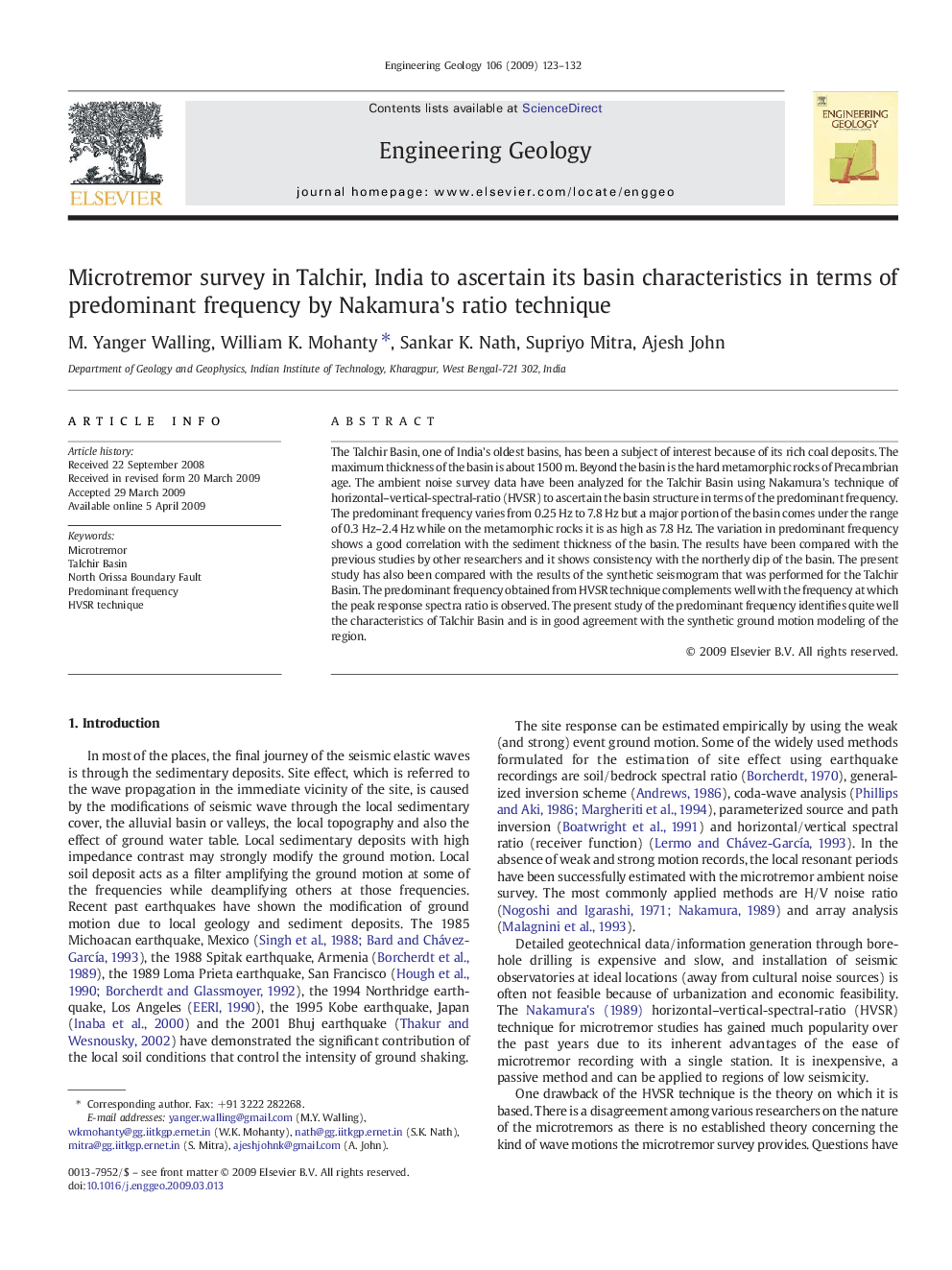| Article ID | Journal | Published Year | Pages | File Type |
|---|---|---|---|---|
| 4744597 | Engineering Geology | 2009 | 10 Pages |
The Talchir Basin, one of India's oldest basins, has been a subject of interest because of its rich coal deposits. The maximum thickness of the basin is about 1500 m. Beyond the basin is the hard metamorphic rocks of Precambrian age. The ambient noise survey data have been analyzed for the Talchir Basin using Nakamura's technique of horizontal–vertical-spectral-ratio (HVSR) to ascertain the basin structure in terms of the predominant frequency. The predominant frequency varies from 0.25 Hz to 7.8 Hz but a major portion of the basin comes under the range of 0.3 Hz–2.4 Hz while on the metamorphic rocks it is as high as 7.8 Hz. The variation in predominant frequency shows a good correlation with the sediment thickness of the basin. The results have been compared with the previous studies by other researchers and it shows consistency with the northerly dip of the basin. The present study has also been compared with the results of the synthetic seismogram that was performed for the Talchir Basin. The predominant frequency obtained from HVSR technique complements well with the frequency at which the peak response spectra ratio is observed. The present study of the predominant frequency identifies quite well the characteristics of Talchir Basin and is in good agreement with the synthetic ground motion modeling of the region.
